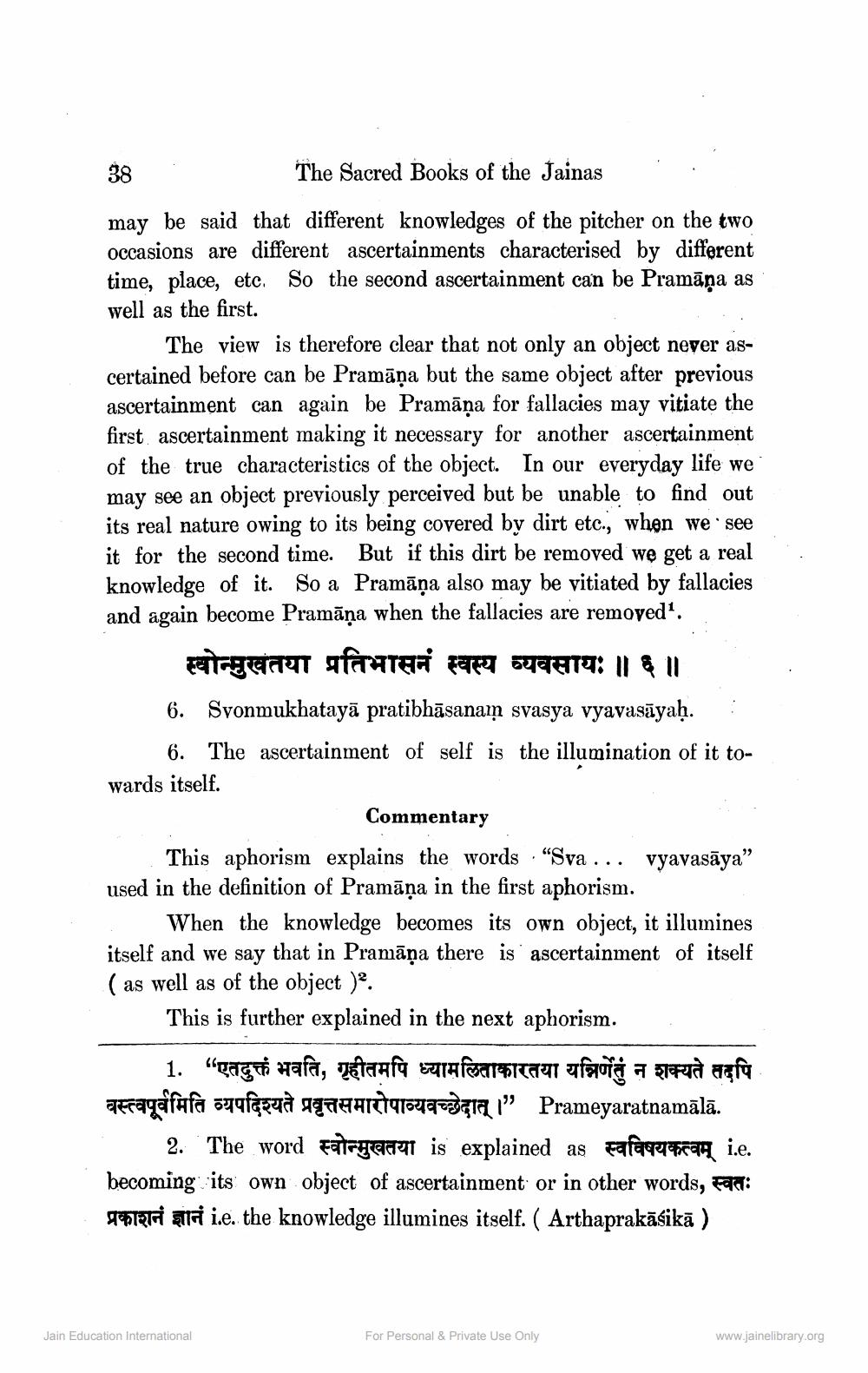________________
The Sacred Books of the Jainas may be said that different knowledges of the pitcher on the two occasions are different ascertainments characterised by different time, place, etc. So the second ascertainment can be Pramāņa as well as the first.
The view is therefore clear that not only an object never ascertained before can be Pramāṇa but the same object after previous ascertainment can again be Pramāņa for fallacies may vitiate the first ascertainment making it necessary for another ascertainment of the true characteristics of the object. In our everyday life we may see an object previously perceived but be unable to find out its real nature owing to its being covered by dirt etc., when we see it for the second time. But if this dirt be removed we get a real knowledge of it. So a Pramāṇa also may be vitiated by fallacies and again become Pramāņa when the fallacies are removed'.
स्वोन्मुखतया प्रतिभासन स्वस्य व्यवसायः॥६॥ 6. Svonmukhatayā pratibhāsanam svasya vyavasāyaḥ.
6. The ascertainment of self is the illumination of it towards itself.
Commentary This aphorism explains the words. “Sva ... vyavasāya" used in the definition of Pramāņa in the first aphorism.
When the knowledge becomes its own object, it illumines itself and we say that in Pramāṇa there is ascertainment of itself ( as well as of the object ).
This is further explained in the next aphorism.
1. "एतदुक्तं भवति, गृहीतमपि ध्यामलिताकारतया यन्निणेतुं न शक्यते तदपि वस्त्वपूर्वमिति व्यपदिश्यते प्रवृत्तसमारोपाव्यवच्छेदात् ।” Prameyaratnamala.
2. The word Fairy@azt is explained as safarger seat i.e. becoming its own object of ascertainment or in other words, Fata: Folga ana i.e. the knowledge illumines itself. ( Arthaprakāśikā )
Jain Education International
For Personal & Private Use Only
www.jainelibrary.org




